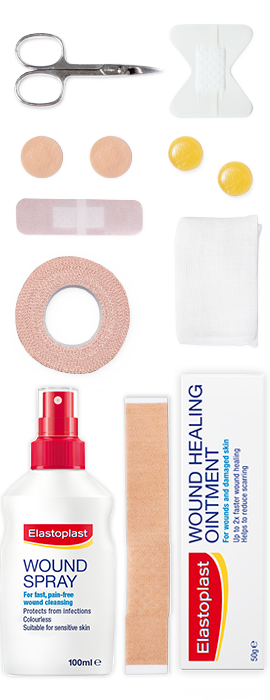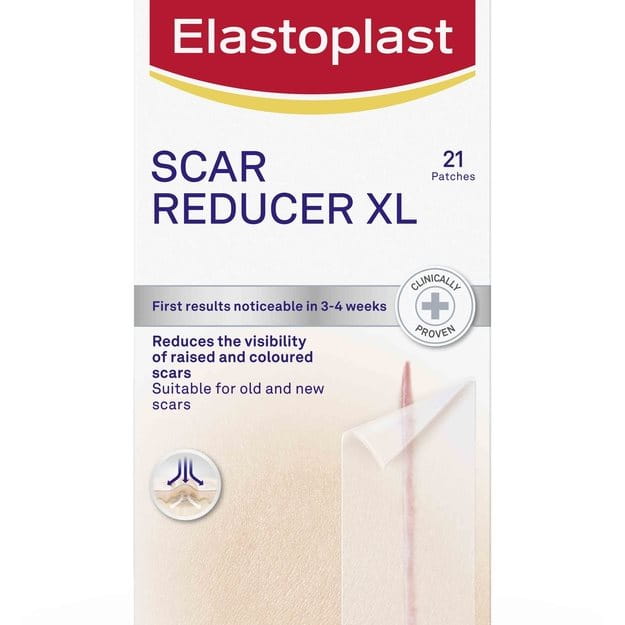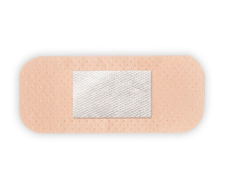When it comes to your medicine cabinet, regular maintenance is key. Know what to look out for with our tips. Be guided through the task of setting the right contents together for your medicine cabinet with an easy, downloadable checklist.
Time To Refresh The Medicine Cabinet

1. Store it in the right place
This may seem like a given, but you should always store your medication in a safe but easily accessible place and should always put it back there after use. Make sure that everybody in the household knows where the medicine kit or cabinet is located. If you have toddlers or small children, the opposite applies of course: Keep your medication in a cool, dry place which is locked up and out of your child’s sight and make sure that they are NOT able to reach it.
Also, keep it organised: Having to look for a package leaflet that’s flying around somewhere because you haven’t returned it to the package the last time you used that medication is unnerving.
2. Check for expiration dates and age specifications
Go through your medicine cabinet at least every six months and check the expiration date of evey package. Be safe and toss out anything that has expired, as well as antibiotics that have not been used up completely.
Be prepared when it is most important: Most accidents still happen in the household or during sports, so make sure to have the right products to help you in those moments when you have cut yourself or sprained an ankle. A well-stocked medicine cabinet means you are all set in those crucial moments. Check the Elastoplast range for convenient essentials and solutions, your wounds even in awkward places. Including the Wound Spray and Wound Ointment, with plasters such as the Plastic Plaster, the Kitchen Kit or Spray Plaster which protects your wounds.
4. Assemble a “to-go-set”
Why should a “medicine cabinet” be something stationary? It makes sense to compile a selection of products that can be taken in your sports bag in case something happens during workout, hiking or other outdoor or sports activities. Elastoplast Cold Spray for instance, which is instantly cooling in case of sprains and injuries as well as a selection of plasters and bandages are a safe choice.
5. Calling sheet
This can be a crucial time-saver: Always keep important emergency phone numbers such as those for an ambulance, for your doctor and pharmacy, or for any hotlines (e.g. poison hotline) in the medicine cabinet.
Medicine Cabinet Checklist
Make sure your medicine cabinet includes these items.
Check supplies regularly every six months.
- A thermometer
- A selection of painkillers and headache medication Cold medicine (decongestants, cough medicine, throat lozenges)
- Antidiarrheal treatment
- Disinfection solution
- Plasters in various sizes (Elastoplast offers a wide selection, from waterproof to sensitive, child-friendly – keep a basic stock of various plasters.
- Elastoplast Spray Plaster for minor wounds - especially convenient on the go
- Elastoplast Wound Spray for fast, pain free cleansing of wounds
- Elastoplast Non-Stick Dressing and Fixation Tape for Wound dressing in case of deeper cuts or grazes
- Tweezers and scissors
- Elastoplast Wound Healing Ointment to help speed up the natural healing of minor superficial wounds as well as first and smaller second degree burns
- Fever medication
- Sterile gloves
- Apart from prescription medication that you take regularly.
Clever Products And Time Savers
and support healing.
Always see your doctor if the wound is deep, bleeding or shows signs of infection like reddening, swelling or warmth.
Also make sure to seek medical help if you are not able to clean the wound properly.
In case you have diabetes a proper wound care is of special importance. Always discuss any concerns you may have with your doctor and/or podiatrist, even for the care of minor wounds and skin cracks – especially on your feet.
Please note that none of the above given tips or recommendations substitute medical advice. Carefully read the instructions for use given in our products‘ packages. Important: consult a health professional in case of any uncertainty of treating your wound properly.
The information provided through this website should not be used to diagnose or treat a health problem or disease. It is not a substitute for professional care or advice. If you have or suspect a health problem, you should consult your doctor. Never disregard professional medical advice or delay in seeking it, because of something you have read on this website.
For further information regarding Elastoplast products, please contact us via email on ANZ.consumerservices@beiersdorf.com. Carefully read the instructions for use given in our products' packages.


